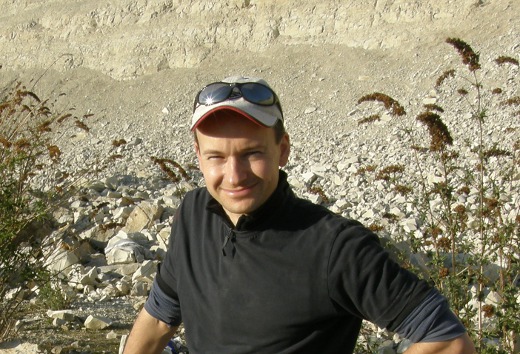
ROBERT RANDELL
|
When I began my site within Discovering Fossils (over 10 years ago!) I intended to create a few simple pages to share some favourite finds from my own collection. With the support of Roy and Lu it has grown into a much larger project, incorporating many museum and private collections. The aim of the site now is to act as a comprehensive guide to the fossils of the Chalk, both the common and the spectacular, alongside a guide to the anatomy and terminology of the animal groups encountered.
I have spent the past decade working as a hydrocarbon exploration consultant, assisting oil and gas companies on projects across much of Europe, as well as Africa and North America. Images above - seeing the world, through work - fieldwork studies and expeditions have been a particular focus of my professional career. Palaeontology is only an occasional part of working life for most oil and gas explorers, though biostratigraphy (usually focussed on micro- and nannofossils) can be an important tool for understanding the results of oil & gas wells and for supporting geological interpretations made during exploration fieldwork.
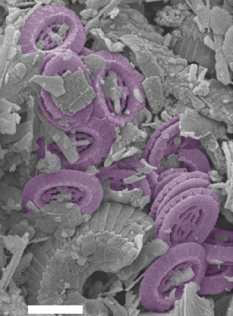 |
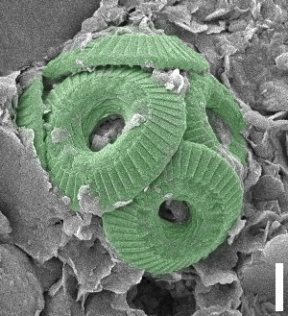 |
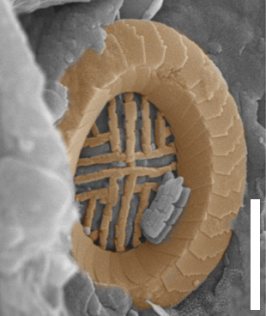 |
My 2006 M.Sc. project (University College London, completed with Distinction) focused on Palaeogene nannofossils, particularly material from Tanzania as figured above. These (false colour) images were captured using a scanning electron microscope and the scale bars represent 2 µm (microns) - 2 thousandths of a millimetre. Nannofossils such as these are the skeletal remains of planktonic algae, and are the primary constituent of chalks. A number of publications have arisen from the wider Tanzania microfossil project which my M.Sc. work was based around (e.g.: Bown, P.R., Dunkley-Jones, T., Lees, J.A., Randell. R., Mizzi, J.A., Pearson, P.N., Coxall, H.K., Young, J.R., Nicholas, C.J., Karenga, A., Singano, J., Wade, B.S. 2008. A Paleogene calcareous microfossil Konservat-Lägerstatte from the Kilwa Group of coastal Tanzania, GSA Bulletin, January/February 2008, 120, 1/2, 3-12; and Bown, P., Dunkley-Jones, T., Young, J.R., Randell. R., 2009. A Palaeogene record of extant lower photic zone calcareous nannoplankton, Palaeontology, 52, 2, 457-496).
| 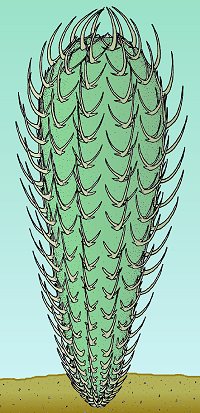 |
|
Following my undergraduate degree at Southampton (2001, Geology B.Sc., First Class Honours) I travelled to the US, studying palaeontology under Bruce Lieberman at the University of Kansas; home of the Treatise. (Note: Both Soton and KU campuses were satisfactorily close to a major chalk outcrop!). Whilst a Jayhawk (a student of KU) I studied the Early Cambrian fauna of the Sekwi Formation, Mackenzie Mountains, Canada, rich in trilobites and unusual beasts known as chancelloriids; extinct sea creatures resembling cacti but probably related to anemones and corals. This included a memorable field season collecting new material in the Canadian Artic and results were published in the Journal of palaeontology (Randell, R., Lieberman, B., Hasiotis, S., and Pope, M. 2005. New chancelloriids from the Early Cambrian Sekwi Formation, Northwest Territories, Canada with a comment on Chancelloriid affinities, Journal of Paleontology, 79, 5, 987-996). Images above show a typical fossil specimen alongside my suggested reconstruction of the new chancelloriid species Archiasterella fletchergryllus (images are approximately life-size). Also the 2003 field team [from left: Author; Steve Hasiotis; Michael Pope; Kelly Dilliard].